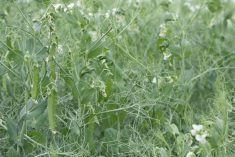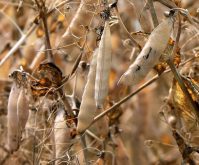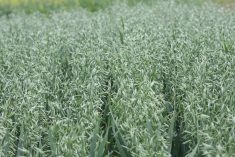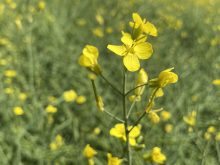Large pea crops in the Black Sea and Baltic Sea regions could prevent a fall price rally this year, says an analyst.
Russia harvested 2.3 million tonnes of the crop, down from 2.6 million tonnes last year, according to Viktor Korobko, director of Veles-Agro Broker Ltd. in Odessa, Ukraine, and author of a weekly grain market report.
APK-Inform has slightly different numbers, forecasting 2.6 million tonnes of production, up from 2.2 million tonnes last year.
Either way, it’s a lot of peas.
Korobko estimates Ukraine grew about one million tonnes, Romania 170,000 tonnes, Moldova 50,000 tonnes and the Baltic states another 600,000 tonnes. All of those are increases over last year.
Read Also

Critical growing season is ahead for soybeans
What the weather turns out to be in the United States is going to have a significant impact on Canadian producers’ prices
It is a little more than four million tonnes of production from the two regions, which rivals the size of Canada’s crop.
He is forecasting 2.2 million tonnes of exports from the region with Russia accounting for 40 percent of that total.
Eighty-five percent of what Russia ships ends up in the Indian Subcontinent, but a lot of it goes through Turkey because it can fumigate with methyl bromide, which is a requirement of the Indian government.
Chuck Penner, analyst with LeftField Commodity Research, said there have been big price run-ups in Canada the last couple of falls because of insatiable demand for peas from markets such as India.
“The last couple of years we’ve had absolute, almost panic, buying,” he said.
He doesn’t expect that same pattern this year because of stiff competition from the Black Sea region and the Baltic states, which tend to get their peas to market about three weeks before Canadian product ships.
“It certainly tends to flatten out the fall pricing period,” said Penner.
Korobko said pea production is on the rise in the Black Sea region because the crop provides good returns and doesn’t face the government controls of a crop such as wheat, so farmers can sell peas without paying export taxes.
Peas have been popular in the Baltic states because of European Union subsidies to producers who grow nitrogen-fixing crops like peas and shrinking margins on competing crops such as wheat and barley.
He thinks the “pea euphoria” may end soon because prices have slumped due to oversupplied markets and input costs are high due to rising seed costs.
Penner said peas from the Black Sea and Baltic Sea regions are cheaper than Canadian product, but Canada has a quality advantage.
However, Korobko thinks that advantage might not be around for long.
“The quality of peas is getting better in the region as farmers try to produce the quality that is buyable by exporters,” he said in an email.
However, this year there is more shrivelled and shrunken peas in the Baltic region while better quality is found in Bulgaria, Romania and Moldova.
Korobko said the long-term growth potential for peas in the regions is capped by the competition from well established crops such as wheat, corn and sunflowers.
“To attract farmers to plant more, peas have to bring significantly better returns and become a part of a very transparent and liquid market,” he said.
Korobko believes pea production will still rise because of improving yields and exporters buying acres. He forecasts seven million tonnes of Black Sea and Baltic Sea production in 10 years, up from four million tonnes this year.
However, production could drop by 20 percent next year because farmers are not thrilled with today’s prices.
Penner said the explosive growth in pea production in those regions won’t continue unabated because prices are eventually going to cycle lower.
“Farmers here (in Canada) have seen yellow pea prices at $5 and $6 (per bushel) and most Russian farmers haven’t seen that yet,” he said.


















